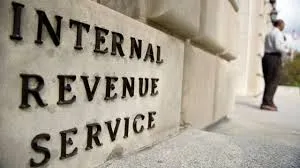
- The program is simplified by eliminating the distinction between M&P and VS plans.
- The program is liberalized by increasing the types of plans eligible for pre-approved status.
- The program is revised to afford greater flexibility in the design of Pre-approved Plans.
More specifically, this revenue procedure sets forth the procedures of the Internal Revenue Service (IRS) for issuing Opinion Letters regarding the qualification in form of Pre-approved Plans under §§ 401, 403(a), and 4975(e)(7) of the Internal Revenue Code (Code). In addition, this revenue procedure modifies the IRS pre-approved letter program by combining the master and prototype (M&P) and volume submitter (VS) programs into a new Opinion Letter program. This revenue procedure modifies and supersedes, in part, Rev. Proc. 2015-36, 2015-27 I.R.B. 20, and modifies Rev. Proc. 2017-4, 2017-1 I.R.B. 146, and Rev. Proc. 2016-37, 2016-29 I.R.B. 136.
Revenue Procedure 2017-41 also modifies the on-cycle submission period for the third six-year remedial amendment cycle for Providers of pre-approved defined contribution plans so that it begins on October 2, 2017 and ends on October 1, 2018.
The revenue procedure significantly restructures the current approach for issuing Opinion Letters regarding the qualification in form of Pre-approved Plans, including:
- The M&P and VS Programs are combined and replaced by a single Opinion Letter program involving two types of plans: Standardized Plans and Nonstandardized Plans.
- A Pre-approved Plan may utilize either of two formats: a basic plan document with an adoption agreement or a single plan document.
- An Adopting Employer of any Nonstandardized Plan may adopt minor modifications.
- The prohibition against combining a money purchase plan with a § 401(k) or profit-sharing plan in the same Pre-approved Plan document is eliminated.
- A Nonstandardized Plan that contains an ESOP may include a § 401(k) feature. (A Pre-Approved Plan that contains an ESOP cannot be a Standardized Plan).
- A Nonstandardized Plan that contains a Cash Balance Formula may now permit the rate used to determine an Interest Credit to be based on the actual return on plan assets. However, the rate used to determine an Interest Credit cannot be based on a subset of plan assets. (A Pre-Approved Plan that contains a Cash Balance Formula cannot be a Standardized Plan.)
- The prohibition against submitting an application for an Opinion Letter for a non-electing church plan is eliminated.
- Any Nonstandardized Plan may provide for either safe harbor or non-safe harbor hardship distributions.
- The beginning and ending dates for the defined contribution on-cycle submission period for the third six-year remedial amendment cycle are modified to begin on October 2, 2017, and end on October 1, 2018.
- The IRS will no longer rule on the exempt status of a Pre-approved Plan’s related trust or custodial account under § 501(a).
- References to specific requirements under Title I of the Employee Retirement Income Security Act of 1974 (ERISA), Pub. L. 93-406, 1974-3 C.B. 1, have been removed and replaced with a statement that Opinion Letters will not consider Title I issues. This is intended to clarify the scope of reliance on Opinion Letters and is not a substantive change in IRS position; and
- The procedures for a determination letter application by an Adopting Employer to obtain reliance under §§ 415 and 416 have been modified to permit an application to be made on Form 5307, Application for Determination for Adopters of Modified Volume Submitter Plans.
The IRS and the Department of the Treasury (Treasury Department) expect to continue to update this Opinion Letter program revenue procedure, in whole or in part, from time to time, including providing further improvements based on comments received. Accordingly, the IRS and Treasury Department continue to invite further comments on how to improve the Opinion Letter program.
Revenue procedure 2017-41 is effective on October 2, 2017, and will apply solely to applications for Opinion Letters submitted with respect to a plan’s third (and subsequent) six-year remedial amendment cycles.


